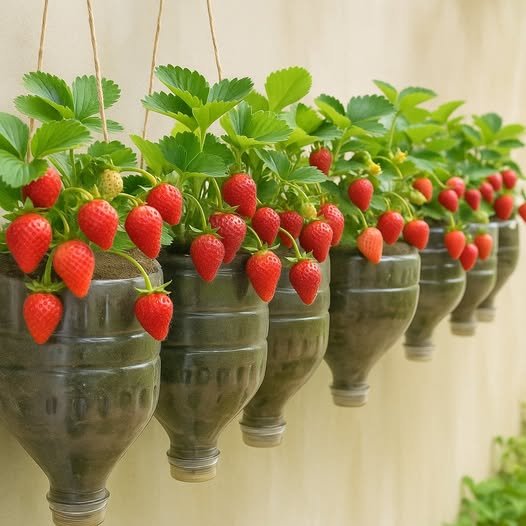If you want to grow strawberries at home and have fruit in less than two months, this article is for you! Growing strawberries can sometimes feel like a long process, but with the right tips and techniques, you can enjoy fresh strawberries much sooner than expected.
The first important piece of advice is understanding how strawberry plants produce fruit and how to encourage them to do so. A common misconception is that a single plant will produce both flowers and runners (new shoots). However, a strawberry plant will only focus on either producing fruit or producing new plants (runners), but not both at the same time. This is where the key to faster strawberry production lies.
Here’s how you can work with your plant to make sure you get fruit as quickly as possible. Once the strawberry plant starts sending out runners—these are the shoots that form new plants—you need to take action. If your goal is to produce fruit, cut off the runners right away. This will redirect the plant’s energy into developing flowers and, eventually, fruit. If you leave the runners, the plant will focus on creating new plants, which will delay fruit production.
Now, you may be asking: how do I make the plant focus on fruit production faster? The answer lies in proper care and environment. Start by using the right soil mixture. The ideal soil for strawberries is rich, fertile, and well-drained. I recommend using a blend of 50% organic compost or well-aged manure, and 50% good quality garden soil. You can also add some cake fertilizer, such as castor cake, to further enrich the soil and stimulate flowering.
Once you have prepared the soil, plant your strawberries in a spot that receives at least 4-5 hours of direct sunlight each day. Strawberries love the sun, and the more sunlight they get, the faster they will grow and produce fruit. Be sure to plant them in a well-drained location to avoid waterlogging, which can harm the roots and stunt growth.
Another crucial point is to ensure proper spacing between plants. Space your strawberry plants around 12-18 inches apart to give them room to spread out and grow. If you’re planting in containers, choose pots that are large enough to allow the roots to grow freely. This will give the plants the best chance to thrive and produce fruit quickly.
Once the plants are in the ground or in containers, you should focus on keeping the soil consistently moist. However, avoid overwatering, as this can cause root rot. Water the plants deeply but allow the soil to dry out slightly between waterings. Mulching around the plants can help retain moisture and keep the soil temperature stable, especially in warmer months.
When it comes to fertilizing your strawberry plants, I recommend using a balanced fertilizer every few weeks during the growing season. Make sure to choose a fertilizer that is high in phosphorus to encourage flowering. Over-fertilizing with nitrogen can lead to excessive leafy growth but fewer flowers and fruit.
Once the plants begin to flower, gently shake them or tap the flowers to help with pollination. Even if you don’t have many pollinators like bees in your area, manually encouraging pollination can lead to better fruit production. This simple trick can make a big difference in the number of strawberries you harvest.
As the strawberries start to grow, you will notice them turning green, and after some time, they will start to ripen. Depending on the variety of strawberry you have, you should be able to harvest your first fruits in as little as 2 months from planting! Just make sure to pick them as they ripen, and enjoy the sweet rewards of your hard work.
Finally, don’t forget that strawberry plants are perennials. After one growing season, the plants will rest and then produce again the following year. But to keep your plants healthy, you should replace them every 2-3 years, as they tend to become less productive over time.
By following these steps, you can enjoy homegrown strawberries in no time, without waiting months or even a full growing season. The key is to manage the runners, provide the right soil, ensure proper watering, and encourage pollination. With a little care and attention,



